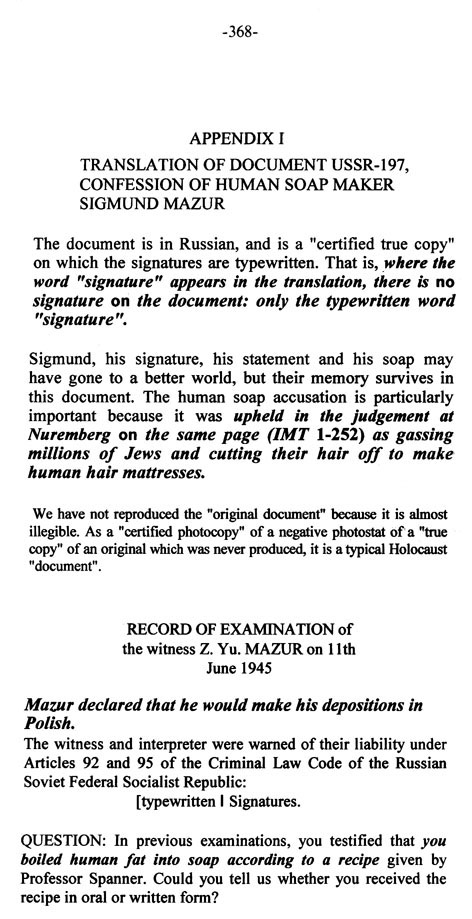STATEMENT OF "HUMAN SOAP" MAKER SIGMUND MAZUR.
The document is in Russian, and is a "certified true copy" on which the signature is typewritten. That is, where the word "signature" appears in the translation there is no signature on the document: only the type-written word "signature."
Sigmund, his signature, his statement and his soap may have gone to a better world, but their memory survives in this document. The "human soap" accusation is particularly important because it was upheld in the judgement at Nuremberg on the same page (IMT I-252) as gassing millions of Jews and cutting their hair off to make human hair mattresses.
We have not reproduced the "original document" because
it is almost illegible. ( Graphics of Document USSR-197)
("Human-soap confession" )(6 pages)
As a "certified photocopy" of a negative photostat
of a "true copy" of an original which was never produced, it is a typical
Holoco$t "document".
See also mazur.htm
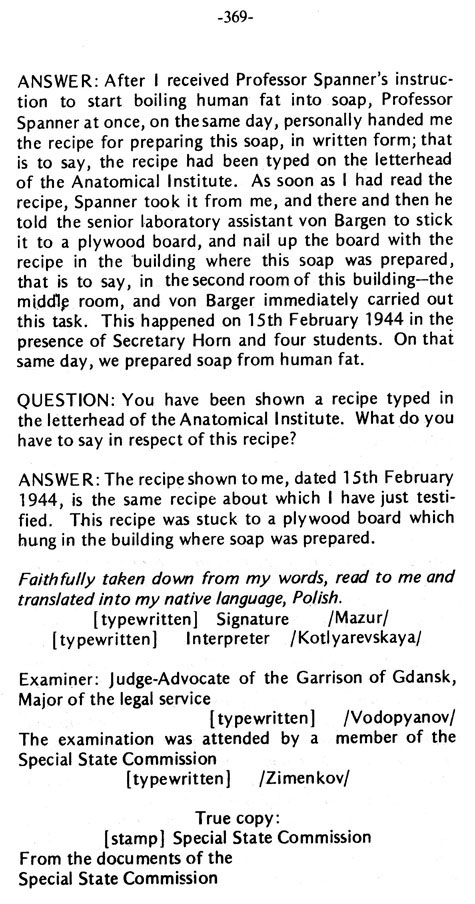
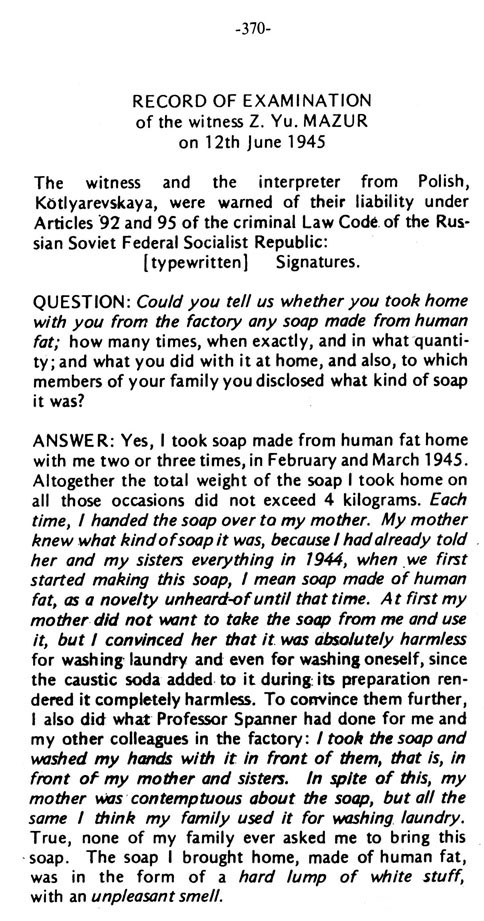
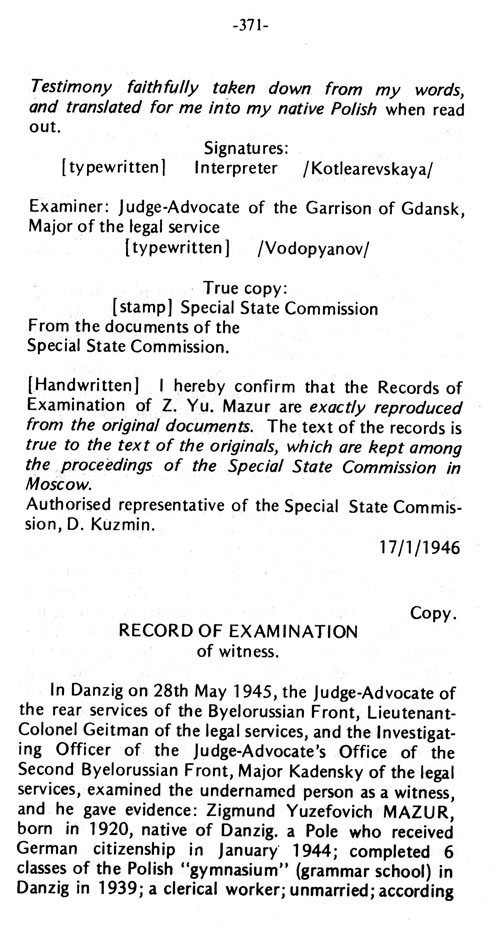
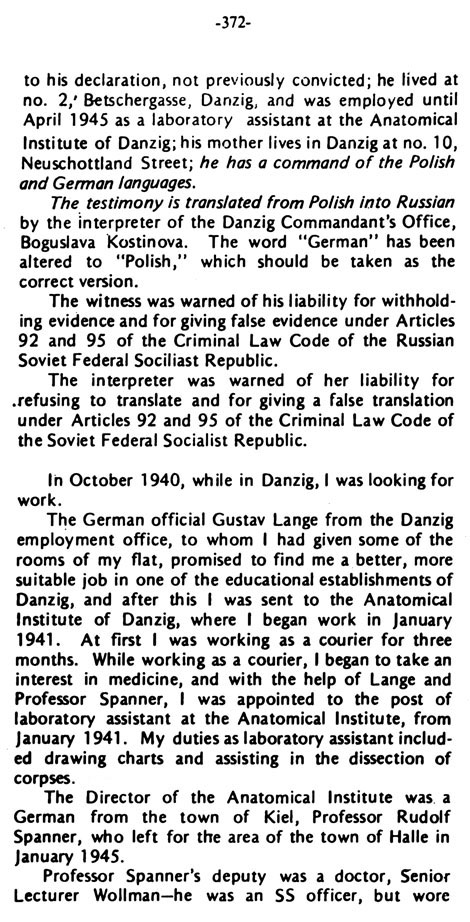
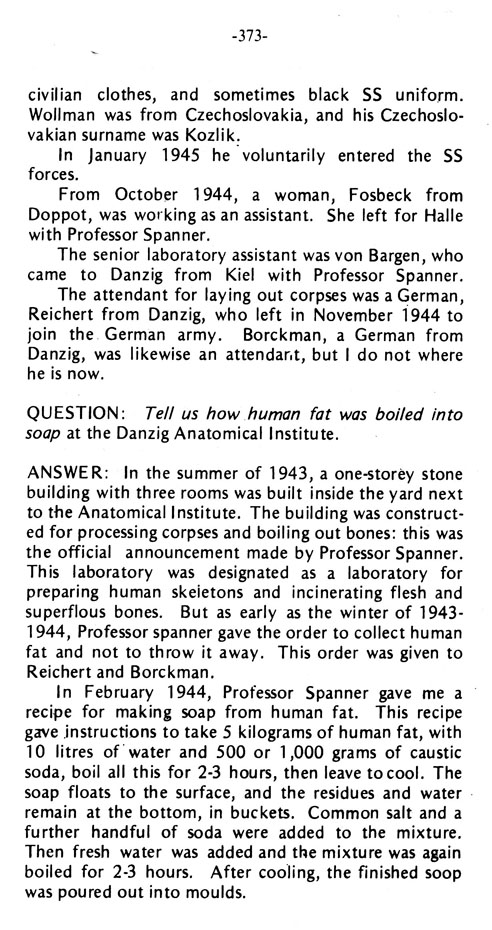
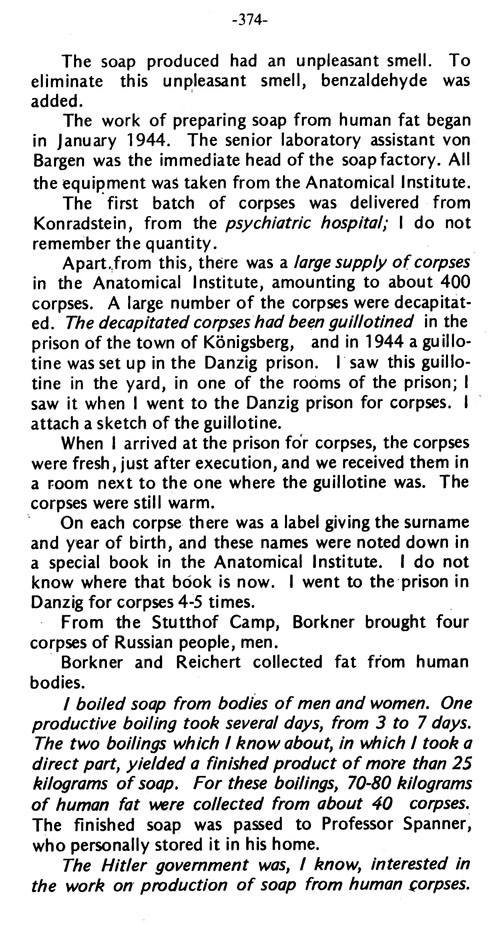
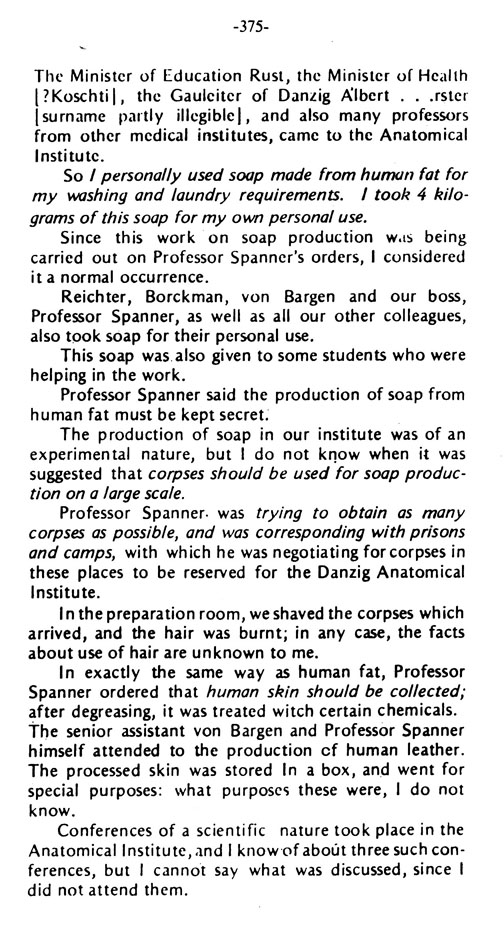
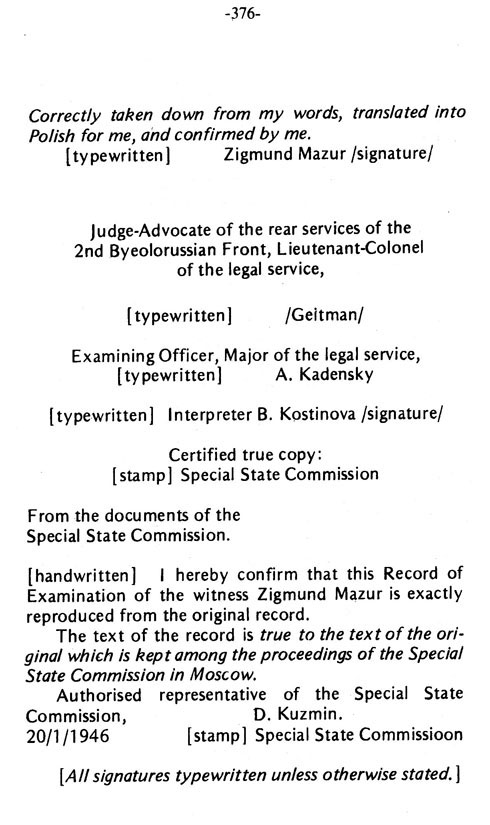
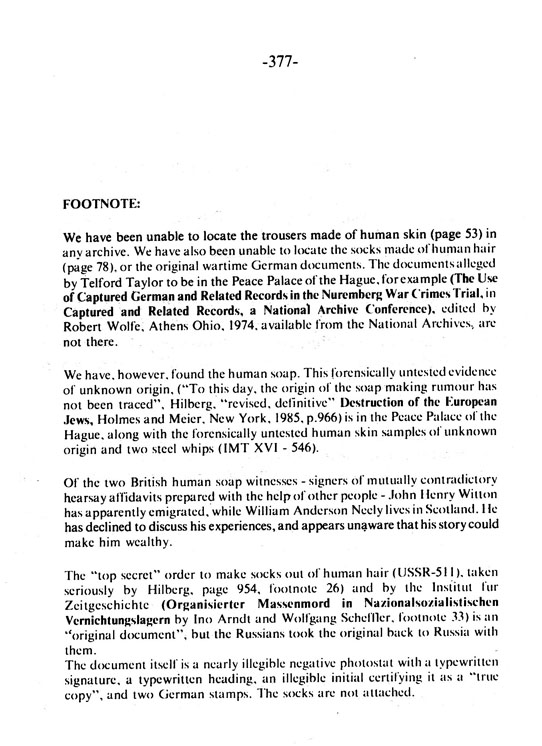
-377- |
FOOTNOTE: |
We have been unable to locate the trousers made of human skin (page 53) in any archive. We have also been unable to locate the socks made of human hair (page 78), or the original wartime German documents. The documents alleged by Telford Taylor to be in the Peace Palace of the Hague, for example (The Use of Captured German and Related Records in the Nuremberg War Crimes Trial, in: Captured and Related Records, a National Archive Conference), edited by Robert Wolfe, Athens Ohio, 1974, available from the National Archives, are not there. |
We have, however. found the human soap. This forensically untested evidence of unknown origin, ("To this day, the origin of the soap making rumour has not been traced", Hilberg, "revised, definitive" Destruction of the European Jews, Holmes and Meier, New York, 1985, p.966) is in the Peace Palace of the Hague, along with the forensically untested human skin samples of unknown origin and two steel whips (lMT XVI - 546). |
Of the two British human soap witnesses - signers of mutually contradictory hearsay affidavits prepared with the help of other people - John Henry Witton has apparently emigrated, while William Anderson Neely lives in Scotland. He has declined to discuss his experiences, and appears unaware that his story could make him wealthy. |
The "top secret" order to make socks out of human hair (USSR-511), taken seriously by Hilberg, page 954, footnote 26) and by the lnstitut fur Zeitgeschichte [Organisierter Massenmord in Nazionalsozialistischen Vernichtungslagern, by Ino Arndt and Wolfgang Schefler, footnote 33) is an "original document", but the Russians took the original back to Russia with them. The document itself is a nearly illegible negative photostat with a typewritten signature, a typewritten heading, an illegible initial certifying it as a "true copy", and two German stamps. The socks are not attached. |
MADE IN RUSSIA - THE HOLOCO$T
Return to MADE IN RUSSIA THE HOLOCO$T PART FOUR
Return to CONTENTS PAGE
Index
